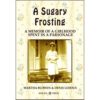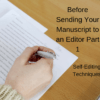
So You Wonder How Memoir Editing Works
When I begin memoir editing with clients, I tell them that a proper editing requires three “read-throughs.” It is impossible to give a manuscript all the attention it deserves in one reading. Reading a manuscript without doing any specific editing and forming only a general impression has always seemed a good idea in theory, but […]

Help to Write My Memoir: Here’s What a Top Editor Does for You
What a top editor does for you. People often ask, “What sort of input does an editing client receive from her/his Memoir Network editor?” The answer, of course, varies according to the client. No two receive the same response. We always individualize. You persist in asking, “Yes, yes, but what sort of manuscript input can […]

Before Sending Your Manuscript To An Editor / Part 2: Use of Time
Clean up your use of time. This second post on self-editing revolves around the use of time. Proper use of time is crucial to understanding a memoir.

Book Publishing Tips: Better Book Production is Possible
My most recent book, A Sugary Frosting / A Memoir of a Girlhood Spent in a Parsonage, made its way to publication. To launch it, as many readers know, I created an advanced reader community and was able to gather 90+ people who volunteered to write a review for Amazon.

Before Sending a Manuscript To An Editor / Part 1: Self-Editing Techniques
Too many manuscripts come to an editor at a stage that reflects the I’m-ready-to-have-this-writing-over-with-finally stance of tired writers. Writing can be a long and tedious task after the initial rush of creativity and enthusiasm. Use these self-editing techniques before sending your manuscript in to an editor.
